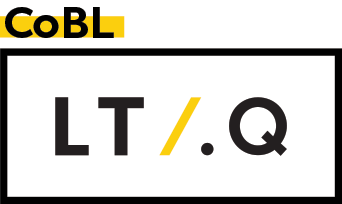Using AI Chatbots to Support Learning in Higher Education
By Jonathan Boymal
Generative AI has emerged as one of the most fascinating tales of our times, and has captured the attention of educators and students alike. OpenAI, the company behind tools like DALL-E 2, was responsible for the development of ChatGPT, which quickly gained popularity upon its release last November. In just five days, over a million people signed up to test this AI chatbot. Since then, five other Large Language Models have been released, including GPT-4 and Bing AI.
The emergence of AI chatbots raises important questions about the role of AI in higher education. Research shows that occupations and industries related to higher education are more exposed to advances in language modelling than others, suggesting that they may face greater disruption or transformation in the near future.
As AI technology continues to advance, many of our students will likely use generative AI in their future jobs. The rise of generative AI has challenged the notion that jobs requiring creativity, compared to those involving more routine, repetitive and highly-structured tasks, are relatively immune to disruption from technology. One of the key benefits of incorporating generative AI into higher education is that it can help students develop important skills that will be essential to the future of work.
For instance, many jobs will involve a "sandwich" workflow, in which a human provides a prompt to the AI, the AI generates a menu of options, and the human chooses an option and adds any final touches. This type of workflow requires students to be able to make decisions, and edit and verify the output of the AI.
AI chatbots also have the potential to foster conceptual understanding and transfer. By providing students with a range of compelling examples and applications of a particular concept in different contexts, students can develop a deeper understanding of the concept by spotting patterns in new contexts. This process can also facilitate transfer by helping students to reference their prior knowledge when faced with new problems.
Another benefit of AI chatbots is their capacity to promote understanding and critical thinking. Students can ask ChatGPT to explain concepts to them “like they were 10 years old” as a check on their own knowledge. ChatGPT can also benefit students by helping them to overcome the "illusion of explanatory depth", where individuals believe they have a deeper understanding of a concept than they actually do. By using ChatGPT to require students to explain a concept step by step and review and improve upon the AI's output, students can engage in self-explanation and identify any gaps in their understanding. This may require using methods of assessment that value the processes and experiences of learning rather than relying on a single artefact like an essay.
In addition, generative AI can help educators create retrieval practice activities for their students. Traditionally, quizzes have been used for this purpose, and generative AI can draft questions quickly and suggest feedback, making the process more efficient
One of the key limitations of AI chatbots is the fact that they have no understanding of content and do not evaluate information for accuracy or importance. Educators can support their students to engage in deep and critical thinking to evaluate and verify the accuracy of what has been generated, rather than viewing the output as the end of the process. Students can be asked to articulate what they have learned and then respond to their reflections as evidence of learning.
In addition to promoting conceptual understanding and critical thinking, AI chatbots can also be used to enhance writing and language skills. By highlighting problematic punctuation, suggesting ways to tighten prose, and offering instruction on building complex sentences, AI chatbots can be help students overcome writing inertia. Providing students with a “writing companion” could enhance their confidence in the final version of their work and reclaim ideas that would otherwise be lost because of poor communication. AI chatbots can also be used as a brainstorming tool, providing students with ideas and prompts to help stimulate their creative thinking and get them started on writing projects.
In this way, AI chatbots can also play a role as a Socratic coach, drawing students into dialogue, asking them questions, getting them to ask questions in turn and iteratively improving their text in dialogue with the AI. This provides students a safe and guided environment to practice applying their knowledge.
AI chatbots have the potential to revolutionise the way we think about education. But will they be adopted by academic staff? There is a stereotype that educators are resistant or hesitant to adopting innovations. According to the technology adoption curve, only a small percentage of faculty would fall into the category of innovators and early adopters, with the majority falling into the middle as followers, and a small group of laggards who resist change.
An alternative perspective is that the main barriers to adoption of AI chatbots as a learning tool are related to broader institutional systems rather than educator interest and motivation. The literature suggests that these include: supporting a culture of peer learning among academic staff; providing a safe place to experiment; recognising the diversity of adopters and designing training and support accordingly; providing academic staff with agency and; aligning the technology with existing pedagogical practices. Recognising the role of workload in adoption, aligning adoption with institutional strategies, and gathering student and staff feedback are also crucial.
As AI technology advances, AI chatbots will likely play an increasingly important role in education, from deepening conceptual understanding and facilitating transfer to improving writing and language skills. As we consider the potential for AI chatbots to transform the way we learn, it's essential to carefully evaluate whether it's the right fit for our students. Educators and institutions must decide how to leverage the potential of AI chatbots in the most effective and meaningful way. Ultimately, it’s up to us to decide how to harness its power.
Visit us
